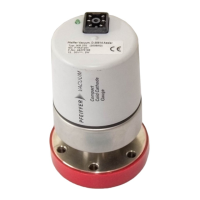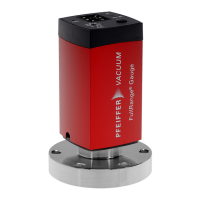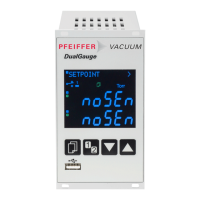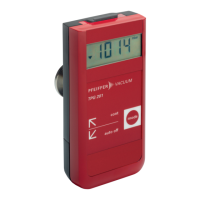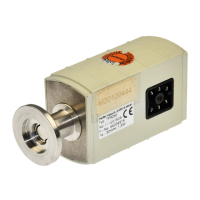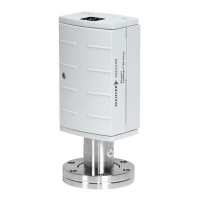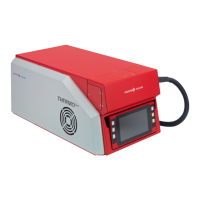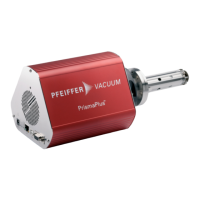Do you have a question about the Pfeiffer Vacuum IKR 251 and is the answer not in the manual?
Document scope, applicable documents, and product variants.
Identifies the intended audience for these operating instructions.
Explains text elements, pictographs, and product markings for clarity.
Lists abbreviations and their meanings employed throughout the manual.
Lists registered trademarks referenced within the documentation.
Defines risk levels and general safety warning categories used in the document.
Provides specific safety directives linked to product life stages and potential hazards.
Outlines general safety measures required for safe product handling and operation.
Details operational limits regarding humidity, orientation, and environmental conditions.
Defines the gauge's intended purpose and specified operating pressure range.
Lists examples of misuse that will invalidate warranty and liability claims.
Explains the operating principle of the cold cathode measuring system.
Describes the LED indicator for the gauge's current operating status.
Guides on how to identify the product using information from its rating plate.
Lists all components included in the product shipment.
Provides instructions and recommendations for safely transporting the gauge.
Details safe storage conditions and precautions to prevent product damage.
Instructions for connecting the gauge to the vacuum system's port.
Steps for disassembling and reassembling the gauge's magnetic unit.
Guidance on connecting the gauge electrically to the control unit.
How to convert measured signals into pressure values using applicable constants.
How to adjust measurements for different gas types using provided correction factors.
Information on the ignition delay characteristic of cold cathode measurement systems.
Discusses the impact of contamination on gauge performance and warranty coverage.
Step-by-step instructions for safely detaching the gauge from the vacuum system.
Information on gauge maintenance and procedures for replacing faulty units.
Detailed steps for disassembling the gauge into its individual components.
Procedures and precautions for cleaning various gauge components.
Instructions for reassembling the gauge after cleaning or maintenance tasks.
Lists common malfunctions, their potential causes, and recommended remedies.
Guidelines and warnings for shipping contaminated or non-contaminated products for service.
Information on recycling materials and general disposal practices for electronic products.
Specific steps for the safe disposal and recycling of gauge components.
Information on available service options like field service, replacement, and repair.
Policy regarding the submission of contaminated products for service and associated costs.
Lists available spare parts with their descriptions and corresponding order numbers.
Details measurement cables, mating connectors, and magnetic shielding options.
Lists accessories with their order numbers for procurement.
Provides conversion tables for pressure and gas throughput units.
Lists product specifications like range, accuracy, response time, and electrical data.
Shows the physical dimensions of the gauge for different flange types.
| Brand | Pfeiffer Vacuum |
|---|---|
| Model | IKR 251 |
| Category | Measuring Instruments |
| Language | English |
